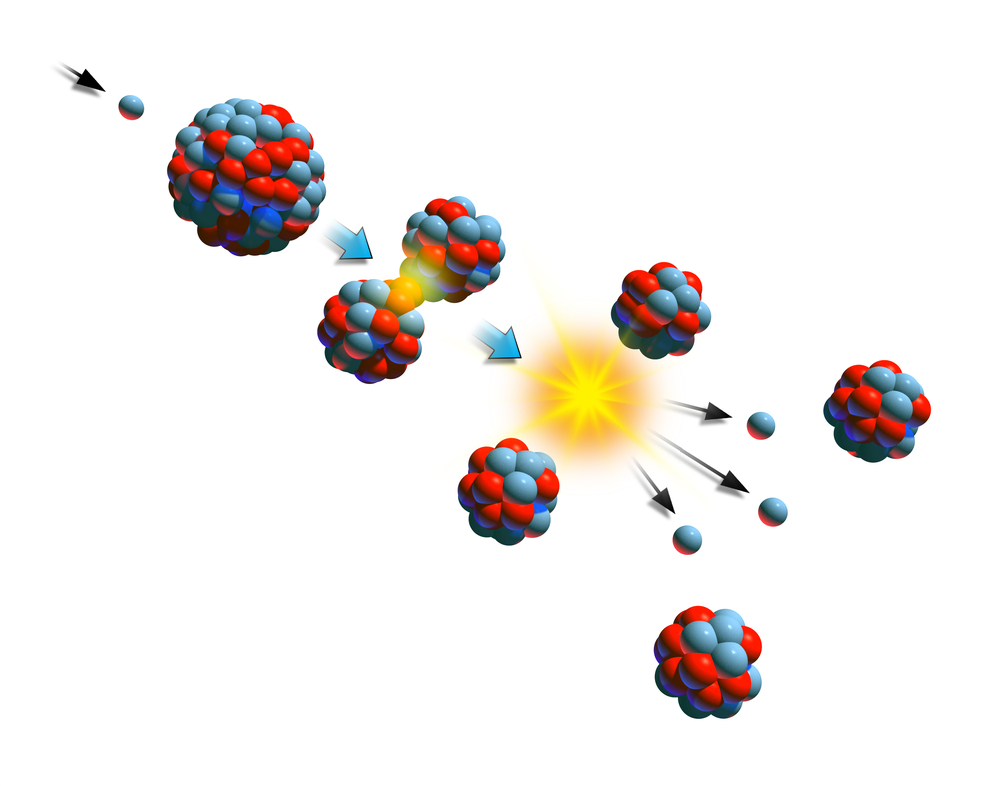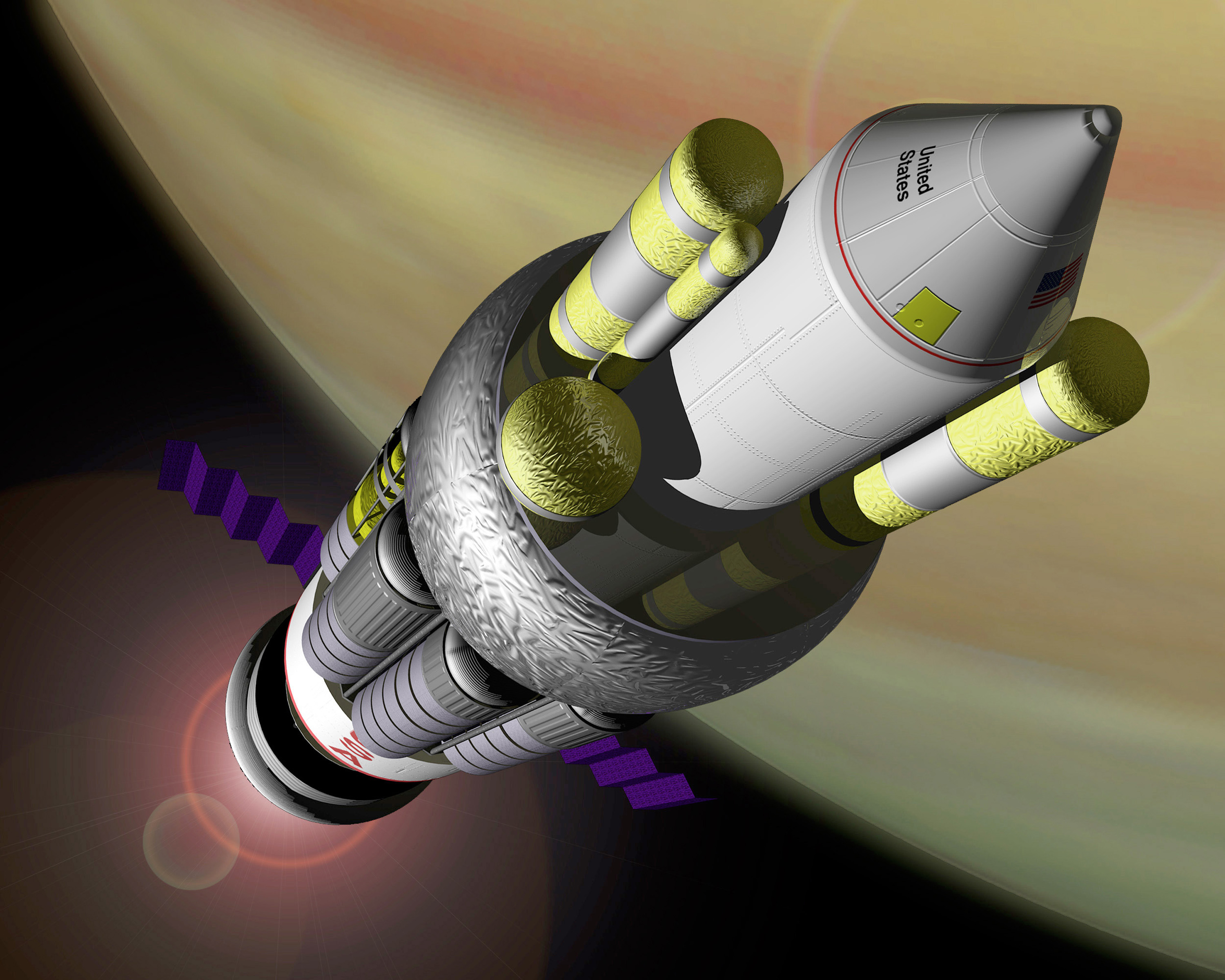What Is The Term Used To Describe The Energy Needed To Get A Reaction Started?
What is Fission?
When an atom splits into 2 parts, either through natural decay or when instigated within a lab, it releases free energy. This process is known as fission. Information technology has bully potential as a source of ability, but is likewise has a number of safety, environmental, and political concerns fastened to it that can hinder its use.
Fission definition
An atom contains protons and neutrons in its key nucleus. In fission, the nucleus splits, either through radioactive decay or because it has been bombarded by other subatomic particles known as neutrinos. The resulting pieces take less combined mass than the original nucleus, with the missing mass converted into nuclear energy.

Controlled fission occurs when a very lite neutrino bombards the nucleus of an atom, breaking it into two smaller, similarly-sized nuclei. The destruction releases a pregnant corporeality of energy — as much as 200 times that of the neutron that started the procedure — as well equally releasing at least two more neutrinos.
Controlled reactions of this sort are used to release free energy within nuclear ability plants. Uncontrolled reactions can fuel nuclear weapons.
Radioactive fission, where the center of a heavy element spontaneously emits a charged particle as it breaks downwardly into a smaller nucleus, does not occur often, and happens just with the heavier elements.
Fission is unlike from the process of fusion, when two nuclei join together rather than split apart.
Discovering atomic energy
In 1938, High german physicists Otto Hahn and Fritz Strassman bombarded a uranium atom with neutrons in an endeavor to brand heavy elements. In a surprising twist, they wound up splitting the cantlet into the elements of barium and krypton, both significantly smaller than the uranium that the pair started out with. Previous efforts past physicists had resulted in merely very small slivers being cutting off of an atom, then the pair was puzzled by the unexpected results.
Austrian-born physicist Lise Meitner, who had fled to Sweden following Hitler's invasion of her state, realized that the separate had also released energy. Working on the problem, she established that fission yielded a minimum of two neutrons for each neutron that sparked a collision. Ultimately, other physicists realized that each newly freed neutron could continue to cause two divide reactions, each of which could cause at least two more. A unmarried impact could jumpstart a chain reaction, driving the release of nevertheless more free energy.
Free energy and destruction
In an intellectual concatenation reaction, scientists began to realize the possibilities incumbent in the new discovery. A letter to U.Southward. President Franklin Roosevelt at the start of World War Ii, drafted by Hungarian physicist Leo Szilard and signed by Albert Einstein, noted that such research could be used to create a bomb of epic proportions, and addressed the idea that the Germans could conceivably deliver such a weapon to the American doorstep. Roosevelt allocated money toward American enquiry, and in 1941, the Part of Scientific Enquiry and Development was formed with the aim of applying the research toward national defence.
In 1943, the Army Corp of Engineers took over the research for making a nuclear weapon. Known as the "Manhattan Project," the top-secret try resulted in the germination of the showtime atomic bomb in July 1945. Two subsequent atomic weapons were used as part of a military strike on the cities of Hiroshima and Nagasaki in Japan.
Since then, nuclear inquiry has been considered extremely sensitive. The knowledge itself is non overly complex, just the materials that fund the process are significantly more difficult to obtain.
More commonly, fission is used to generate free energy inside a nuclear power plant. However, the process creates a meaning corporeality of nuclear waste material that tin can exist hazardous to both people and the environment. At the same fourth dimension, people often fright the dangers that could come with nuclear plants and practice non desire them in their surface area. Such issues mean that nuclear free energy is non equally popular as more than conventional methods of obtaining free energy, such as the use of fossil fuels.

In the 1960s, the U.Southward. regime explored the possibility of using fission equally a method of rocket propulsion. However, the signing of the Limited (Nuclear) Exam Ban Treaty in 1963 put an end to the aboveground explosion of all nuclear weapons, closing the door at least temporarily on the testing of fission-powered rockets.
— Nola Taylor Redd, LiveScience Contributor
Related:
- VIDEO: Atoms for Peace: Nuclear Fission
- Power the Future: x Means to Run the 21st Century
- Pinnacle X Disruptive Technologies
What Is The Term Used To Describe The Energy Needed To Get A Reaction Started?,
Source: https://www.livescience.com/23326-fission.html
Posted by: davisonated.blogspot.com


0 Response to "What Is The Term Used To Describe The Energy Needed To Get A Reaction Started?"
Post a Comment